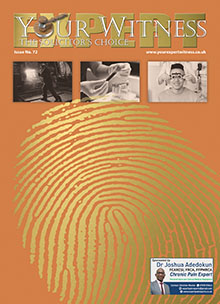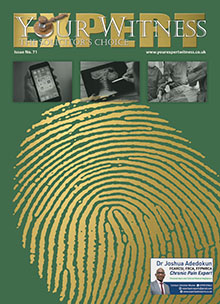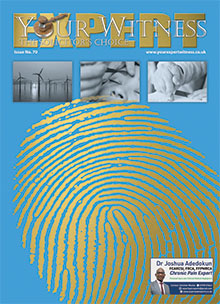PSYCHOLOGISTS are regularly instructed in personal injury litigation to assess for Post Traumatic Stress Disorder (PTSD) and chronic pain; however, problems are inherent in the assessment of each. Firstly, both are characterised by subjectively reported symptoms, so that careful assessment is required to discern real from factitious PTSD and genuine pain from malingered presentation. Secondly, both are potentially associated with financial gain via litigation or with personal gain, such as sympathy and care from an overinvolved spouse/partner or time away from a disliked job. Again, careful assessment is required. This article highlights typical instructions to psychologists in chronic pain litigation and the key characteristics of PTSD in relation to medicolegal assessments; in both cases the need for a comprehensive assessment is paramount.
Pain defined
Most current thinking concerning chronic pain is based on the premise that it involves a personal, private sensation of hurt which is influenced by a range of personal, cultural and cognitive-emotional factors. The International Association for the Study of Pain defines pain as ‘an unpleasant sensory and emotional experience associated with actual or potential tissue damage, or described in terms of such damage’. Chronic pain is pain experienced every day for three months or more in the six months prior to the assessment.
Typical instructions to psychologists in chronic pain case It is well documented in the research literature that the association between physical impairment and reports of pain is only moderate. In other words, a range of psychological factors influence pain perception and reporting regardless of whether or not evident organic pathology can be detected. In a medico-legal context a comprehensive psychological assessment with regard to chronic pain will seek to determine the role of psychological factors in relation to the person’s pain complaints and the proportion of their difficulties accounted for by such factors.
There are three main types of personal injury claim involving on-going chronic pain, where instruction of a clinical psychologist may well be appropriate:
- When there is clear objective evidence (eg X-ray or MRI scan) both that a clear physical injury occurred and also that the tissue damage has healed but the litigant continues complaining of pain.
- When there is an absence of radiological evidence but a ‘soft tissue’ injury (eg whiplash) is diagnosed with an assumption that symptoms should dissipate within a specified time post accident; however, the litigant continues complaining of pain well beyond that time frame.
- When there is a medical diagnosis (eg fibromyalgia) based on specific diagnostic criteria but without any clear radiological or other objective evidence. Such conditions are often referred to as functional (ie there is a change in function but not structure), with many researchers arguing that in relation to such conditions psychological factors play a fundamental aetiological role.
Factors influencing pain perception
As noted, a number of factors influence pain perception and careful attention should be paid to those in the context of an assessment. Pain reporting is affected by both emotional factors (anxiety and depression increase pain perception while optimism and relaxation decrease it) and behavioural factors (pain focus and boredom increase pain perception while distraction and involvement in activities decrease it). A history of pain complaints and a family history of such difficulties are also associated with increased pain reporting in response to injury. Personal history is also of importance, with childhood sexual and physical abuse in particular having been demonstrated repeatedly in the research literature to increase the risk of the occurrence of chronic pain syndromes including fibromyalgia, musculoskeletal pain and back pain.
Pain may also be exacerbated and maintained by the way in which the person copes with it (active, purposeful coping is associated with decreased pain perception while passive or negative strategies such as catastrophising exacerbate it) and the extent to which activity is avoided due to fear of pain when such activity is not actually associated with physical risk.
Finally, factors such as secondary gain (eg not having to go to work), excessive sympathy and attention from supportive others, as well as the process of litigation itself, can all serve to increase pain reporting.
PTSD - the traumatic event
As with all mental health problems, PTSD can be diagnosed with regard to either the International Classification of Diseases and Related Problems (now in its 10th edition as ICD10) or the Diagnostic and Statistical Manual of the American Psychiatric Association (now in its 4th edition as DSMIV).
PTSD, unlike any other mental health diagnosis, with the exception of acute stress disorder, requires a specific trigger event to initiate the disorder; the nature of that is quite clearly specified by both ICD10 and DSMIV. The necessary characteristics for the event are regarded as the ‘entry criteria’ for the disorder. In other words, if the event does not meet such criteria then consideration of any symptoms the claimant might report in relation to PTSD is inappropriate.
ICD10 is quite clear that the trigger event must be ‘of an exceptionally threatening or catastrophic nature, which is likely to cause pervasive distress in almost anyone’. Entry criteria according to DSMIV are somewhat more open to interpretation. The two criteria specify that (A) the person experienced, witnessed or was confronted with an event or events that involved actual or threatened death or serious injury, or a threat to the physical integrity of self or others, and (B) the person’s response involved intense fear, helplessness or horror.
PTSD - the symptom profile
Having decided whether an event is of sufficient magnitude to be considered in relation to PTSD, the next consideration is whether the symptoms reported by the claimant match the profile required for a full diagnosis. As with the entry criteria, the ICD and DSM differ with regard to symptoms required for a diagnosis of PTSD. Indeed, research studies indicate that PTSD is diagnosed twice as often under ICD criteria in comparison with DSM criteria. This is partly because with ICD the symptoms are less precisely stated, but also because the methods of assessment for DSM have become more refined. Structured diagnostic interview schedules have been developed to specifically assess for PTSD according to DSMIV criteria.
The advantages of such schedules are manifold; not only do they allow for the quantification of symptoms according to agreed criteria, hence increasing consistency, they also allow for probing of reported symptoms. It has been argued that assessments not based on reliable diagnostic interview schedules are of insufficient reliability in medico-legal contexts.
As with pain reporting, many factors influence the person’s response to a traumatic event, and again careful assessment of this is required.
The need for a comprehensive assessment
In attempting to understand a claimant’s reported pain and/or their response to a traumatic event, both their reported symptoms and the range of factors likely to influence them require careful scrutiny. With regard to pain there are many occasions when it seems to an observer to be out of proportion to the nature of the material event and the physical injuries sustained. Through behavioural observation, both during the clinical assessment and video surveillance where appropriate, specifically targeted questionnaires – particularly to assess beliefs about pain, fear of pain and pain coping – and a carefully constructed and detailed interview, a full and informative formulation of the claimant’s pain reporting can be established. With regard to PTSD, assessments which do not make use of one of the reliable and valid structured clinical interviews to aid diagnosis are likely to be of limited value.



 “Speculate before you accumulate. I am a long term regular writer and advertiser in 'Your Expert Witness - the Solicitor’s Choice'. This investment pays me substantive dividends; I get more Expert Witness work with every issue. Not only solicitors and barristers but also judges seem to read it. It is a win-win situation. Success breeds success; I must continue to write and advertise.”
“Speculate before you accumulate. I am a long term regular writer and advertiser in 'Your Expert Witness - the Solicitor’s Choice'. This investment pays me substantive dividends; I get more Expert Witness work with every issue. Not only solicitors and barristers but also judges seem to read it. It is a win-win situation. Success breeds success; I must continue to write and advertise.”
























































































































